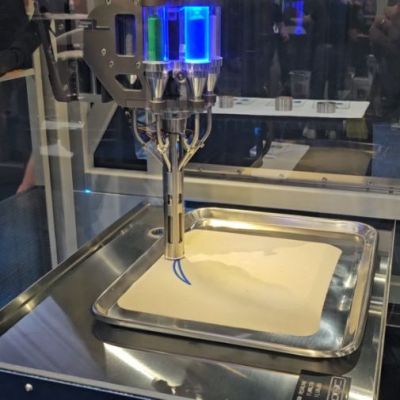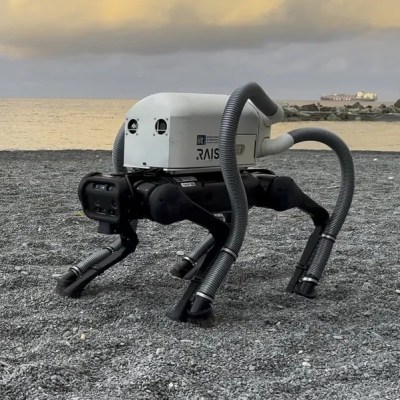Additive Manufacturing (AM) is a field of ever-growing importance, with many startups and existing companies seeking to either improve on existing AM technologies or market new approaches. At the RAPID + TCT 2024 tradeshow it seems that we got two more new AM approaches to keep an eye on to see how they develop. These are powder-based Hot Isostatic Pressing (HIP) by Grid Logic and centrifugal 3D printing by Fugo Precision.

Grid Logic’s HIP uses binder-less powders in sealed containers that are compressed and deposited into a HIP can according to the design being printed, followed by the HIP process. This is a common post-processing step outside of AM as well, but here HIP is used as the primary method in what seems like a budget version of typical powder sintering AM printers. Doubtlessly it won’t be ‘hobbyist cheap’, but it promises to allow for printing ceramic and metal parts with minimal wasted powder, which is a major concern with current powder-based sintering printers.
While Grid Logic’s approach is relatively conservative, Fugo’s Model A printer using centrifugal printing is definitely trying to distinguish itself. It uses 20 lasers which are claimed to achieve 30 µm accuracy in all directions with a speed of 1 mm/minute. It competes with SLA printers, which also means that it works with photopolymers, but rather than messing with FEP film and pesky Earth gravity, it uses a spinning drum to create its own gravitational parameters, along with a built-in parts cleaning and curing system. They claim that this method requires 50% fewer supports while printing much faster than competing commercial SLA printers.
Even if not immediately relevant to AM enthusiasts, it’s good to see new ideas being tried in the hope that they will make AM better for all of us.



















